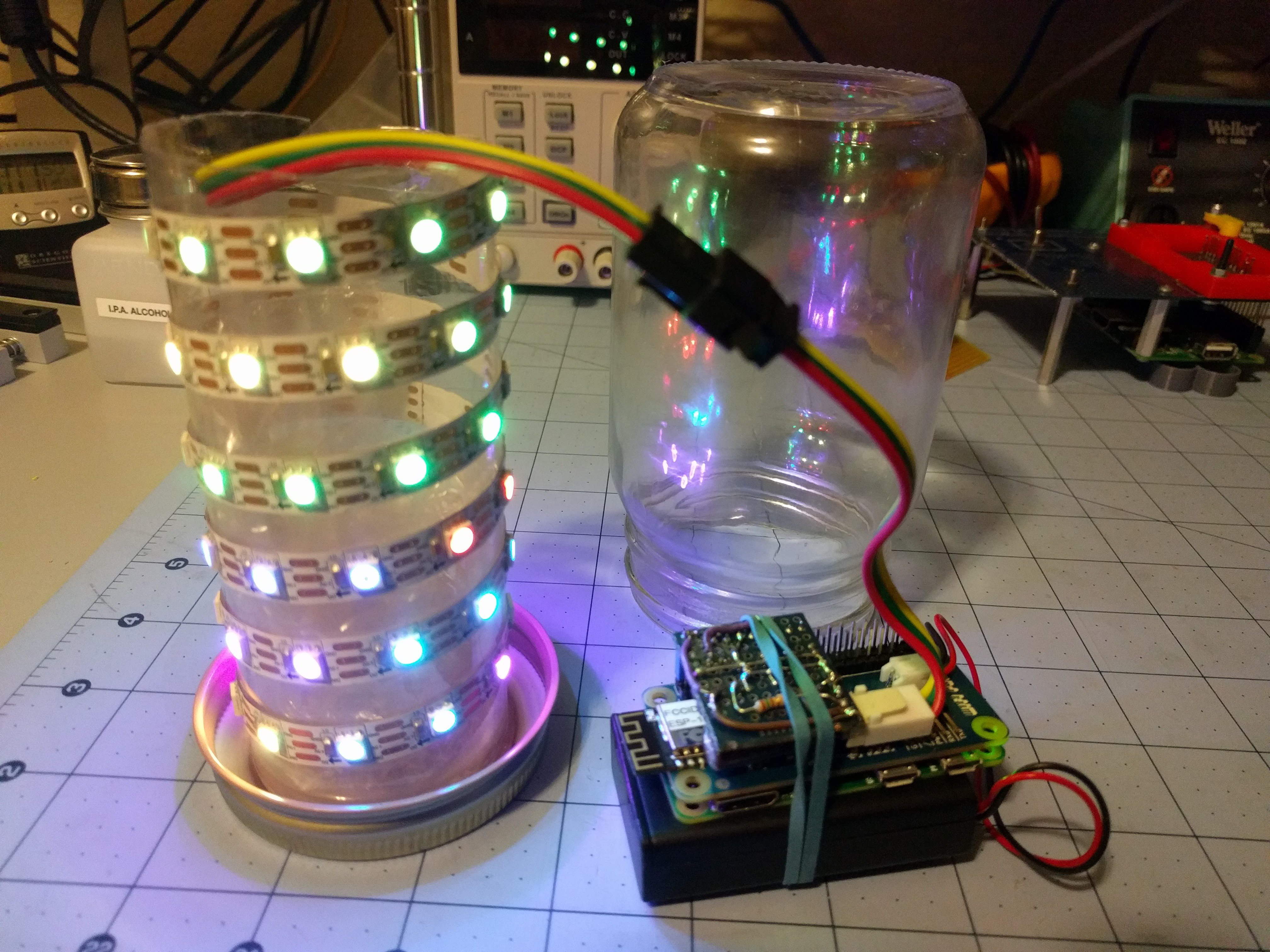It's been a while, huh?
Much has happened over the last few weeks. The biggest news is that Espressif has agreed to allow their ESP8089 driver to be licensed under GPLv2 and the associated binary blob firmware to be put under the Apache license. Now the driver powering this project as well as many tablet devices can be submitted for inclusion in the Linux kernel. A few embedded Linux enthusiasts have stepped up to clean up the code and push it through the kernel patch submission process. Thanks to Jeroen@Espressif for getting the approvals, and the free-electrons folks, jwrdegeode, noahwilliamson, and icenowy for their ongoing work in making the driver kernel-ready.
About two weeks ago I sold the last finished WiFi Pants kit in my inventory. I'm also running out of my long lead time components: PCBs, ESP modules, and the long stack through headers. I will be doing another run of kits which should be in stock in a couple of weeks, but after those are gone it's going to take a couple of months to build any more.
Finally, I was lucky enough to participate in the first Hackaday TV hangout and talk for a few minutes about my project with Sophie Kravitz and Limor Fried and hear about some really neat Pi hacks. But while excitedly rambling on about my WiFi Pants project, I forgot to point out the demo I put together to show off the WiFi pants board's power supply. You can see it on the bench behind me in the video blinking away.
Behold, the Access Point Sniffer Thing With LEDs in a Jelly Jar That I Haven't Considered Naming Until Right This Moment, or APSTWLJJTHCNURTM for short:


It's a WS2812 LED strip in a jar that changes patterns depending on the number and strength of WiFi accesss points in the area. It uses a 60 LED WS2812 strip, WiFi Pants, a Pi Zero, 3 AAA NiMh batteries, a jam jar, a plastic tube from the packaging for a USB charger, plenty of clear packing tape, a few dabs of hot glue, and a WS2812 level shifter board made with junk box bits. Software is in Python using the rpi_ws281x library for talking to the LEDs and iw_parse to simplify the AP scan.
Every second or so the Pi does a scan of the available networks. The networks are sorted by the signal strength and assigned an LED for each 4dB of signal strength. Each access point gets its own color by hashing the last 3 octets (the non-OUI portion) into hue and saturation. You can see at the bottom in the gif above that the LEDs towards the bottom of the jar are more uniformly colored and don't change much, while the APs that have weaker signals dance around with a larger variety of colors towards the top as they come in and out of range.
Total time spent on this was about 5 hours. I figured that the string at full brightness plus the Pi and ESP8266 would push near the 2A limit of the boost converter, making it a good demo. However the LEDs at full power saturated my webcam to the point that the jar looked like it was filled with burning magnesium, so it's limited to 1/8 brightness. That's probably for the best, as the AAA batteries droop too much at full LED power to keep up with the 4A or so the converter pulls at its limits.
Thanks HaD, Adafruit, Limor, Sophie, and all the other hackers for a fun hour of sharing projects!
 ajlitt
ajlitt
Discussions
Become a Hackaday.io Member
Create an account to leave a comment. Already have an account? Log In.